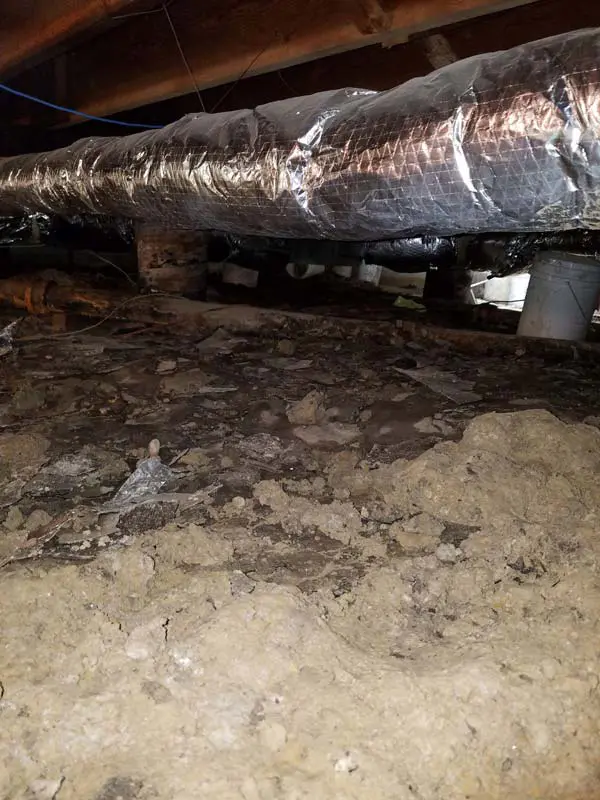What To Do With Water In Crawl Space
Apr 02, 2024
What To Do With Water In Crawl Space
Have you ever ventured into your crawl space only to find it damp or even worse, flooded with water? Dealing with water in a crawl space can be a homeowner’s nightmare, but fear not! In this blog post, we’ll explore the causes of water accumulation in crawl spaces, the risks it poses to your home and health, practical steps to take when faced with this issue, and valuable prevention tips to keep your crawl space dry and problem-free. Let’s dive in and tackle the challenge of water in crawl spaces together! Contact Rescon Basement Solutions today!
What To Do With Water In Crawl Space
When you discover water in your crawl space, it’s crucial to take immediate action to prevent further damage. Start by identifying the source of the water intrusion. It could be from leaks in plumbing, poor drainage around your home, or even groundwater seepage.
Once you’ve identified the source, address any necessary repairs or fixes. This may involve sealing cracks, installing a sump pump, improving ventilation, or redirecting downspouts away from your foundation.
Next, remove any standing water using a wet/dry vacuum or pump. Thoroughly dry out the area with fans and dehumidifiers to prevent mold growth and odors.
Inspect for any signs of damage to insulation, wood beams, or other materials affected by the water. Replace damaged materials as needed to maintain the structural integrity of your crawl space.
Consider consulting with a professional waterproofing contractor for expert advice and long-term solutions to keep your crawl space dry and healthy.
Understanding the Causes of Water in Crawl Spaces
Water in crawl spaces can be a common issue for many homeowners, but understanding the root causes can help you address it effectively. One of the primary reasons for water accumulation in crawl spaces is poor drainage around the foundation of your home. If rainwater is not properly diverted away from the house, it can seep into the crawl space over time.
Another culprit could be plumbing leaks or burst pipes within the walls or under the floor, leading to excess moisture collecting in this enclosed area. Additionally, high humidity levels can contribute to condensation forming on surfaces and eventually pooling on the ground.
Moreover, inadequate ventilation in the crawl space may trap moisture inside, creating a breeding ground for mold and mildew. By identifying these underlying causes, you can take targeted steps to mitigate water issues and maintain a dry environment underneath your home.
Risks and Dangers of Water in Crawl Spaces
Water in crawl spaces can pose serious risks and dangers to your home and health. Mold and mildew thrive in damp environments, leading to poor indoor air quality and potential respiratory issues for you and your family. Additionally, excess moisture can attract pests like termites or rodents looking for a water source.
Structural damage is another concern when water seeps into the crawl space. It can weaken wooden supports, beams, and even the foundation of your home over time if left unaddressed. This may result in costly repairs or even compromise the stability of your house.
Furthermore, standing water creates a breeding ground for bacteria, which can contaminate your living space. It’s essential to address any water issues promptly to prevent further damage and maintain a healthy environment within your home. Contact Rescon Basement Solutions today!
Steps to Take When Dealing With Water in Crawl Space
Dealing with water in your crawl space can be a daunting task, but taking the right steps can help you effectively address the issue. The first thing to do is to identify the source of the water infiltration. This could be due to poor drainage, leaky pipes, or even groundwater seepage.
Once you’ve pinpointed the source, it’s essential to address any underlying issues that may be contributing to the water problem. Repairing leaks and improving ventilation can go a long way in preventing future water damage.
Next, you’ll want to remove any standing water using a wet vacuum or pump. It’s crucial to dry out the area thoroughly to prevent mold growth and structural damage. Consider installing a dehumidifier to regulate moisture levels in your crawl space.
Inspect and seal any cracks or openings that might allow water entry into your crawl space. Properly maintaining gutters and downspouts can also help divert rainwater away from your home’s foundation. By taking these proactive steps, you can effectively deal with water in your crawl space and protect your property from potential damage.
Prevention and Maintenance Tips for Keeping Crawl Spaces Dry
Prevention and Maintenance Tips for Keeping Crawl Spaces Dry
Proper maintenance is key to preventing water from accumulating in your crawl space. Here are some tips to help you keep this area dry:
– Regularly inspect the crawl space for any signs of water leakage or moisture.
– Ensure that gutters and downspouts are directing water away from the foundation of your home.
– Install a sump pump if needed to remove excess water efficiently.
– Use vapor barriers on the ground to prevent moisture from seeping up into the crawl space.
– Improve ventilation by installing vents or a dehumidifier to reduce humidity levels.
By following these prevention and maintenance tips, you can protect your home from the risks associated with water in crawl spaces. Keep your crawl space dry and maintain a healthy environment for your family. Contact Rescon Basement Solutions today!

